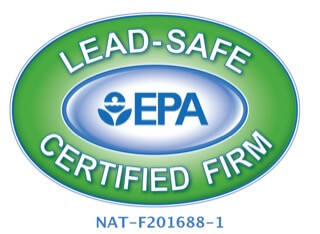Environmental Consulting
Our Environmental Consulting division is composed of an Industrial Hygiene (IH) team and Site Investigation team. Our IH team of certified hygienists and licensed inspectors conducts indoor air quality investigations, asbestos/lead/mold surveys and risk assessments for public and private sector clientele.
Our Site Investigation team of professional geologists, engineers and scientists conducts Phase I & II environmental site assessments, vapor intrusion studies, site characterizations and soil/groundwater remediation design and O&M.
Core Services Include:
- Phase I Environmental Site Assessments
- Phase II Site Investigations and Characterizations
- Asbestos, Lead, PCBs & Mold Surveys/Sampling/Analysis
- Hazardous Waste Sites
- Industrial Hygiene (IH) and Indoor Air Quality (IAQ) Assessments
- Gun Range Maintenance
Read more about these services below or ask a question by calling (877) 457-TECI or online.

Phase I Environmental Site Assessments
An environmental site assessment (ESA) in the United States should identify existing or potential liabilities from environmental contamination for a real estate holding. It addresses issues of both the underlying property and its improvements. Some contaminated sites are classified as brownfields, which may be subject to the Environmental Protection Agency\’s (EPA’s) Superfund program in severe cases.
A Phase I ESA is typically the first step in the due diligence process for environmental contamination. It’s an investigation to identify the possible existence of hazardous materials on the property, although it doesn’t typically include actual sampling of contamination sources such as air, soil, groundwater and construction materials. The EPA specifies the standards for a Phase I ESA, which are partially based on ASTM Standard E1527-13.

Phase I ESAs are typically requested by an interested party such as a buyer, seller or lender in anticipation of a property transfer. Regulatory agencies may also require a Phase I ESA for a site when they suspect toxic conditions.
Learn more about our Phase I ESA
Phase II Site Investigations and Characterizations
A Phase II ESA is a more intrusive investigation of the site that includes collecting original samples and analyzing them for suspected contaminants. The most common contaminants include petroleum products, heavy metals, asbestos, lead and mold. Organic chemicals such as those found in pesticides may also be the subject of a Phase II ESA.
The most common reason for conducting a Phase II ESA is when a Phase I ESA discovers a Recognized Environmental Condition (REC), meaning the investigator believes the site has a significant potential for an environmental liability that can affect the property’s value.
These liabilities include civil liabilities in addition to the costs of a regulatory-mandated cleanup and waste disposal. Civil liabilities primarily include actions such as property occupants filing suit due to exposure to hazardous materials.
Learn more about our Phase II ESA
Asbestos, Lead, PCBs & Mold Surveys/Sampling/Analysis
Asbestos is a collective term given to a family of naturally found minerals. The three main types of asbestos (chrysotile, amosite, crocidolite) have a wide range of appearances, although the most commonly used form of asbestos used in construction is chrysotile that has a silky, fluffy or fibrous texture.
Asbestos was used extensively in buildings for a variety of purposes from the 1940s to the 1970s, until the EPA banned virtually all uses of asbestos for construction in 1978. Although there is no safe level of asbestos exposure, the significant health risks are not posed from intact non-friable sources such as vinyl floor tiles, but more from damaged, friable sources like spray on insulation, ceiling tiles and pipe insulation causing respiratory diseases when the airborne fibers are inhaled.
Lead-based paint was used extensively in the United States until the Consumer Product Safety Commission banned almost all uses of it in 1978. However, many buildings constructed after this date still have lead-based paint. The greatest danger posed by this paint occurs when it’s ingested by a susceptible population (e.g. children, pregnant women), which can cause neurological damage.
The capacitors of fluorescent light ballasts, some electrical transformer equipment and even some window caulking (pre-1978) are likely to contain polychlorinated biphenyls (PCBs) at a concentration of 50 parts per million (ppm) or greater. PCBs are a known carcinogen, especially when aerosolized and subject to inhalation.
Mold can grow on virtually any porous material that has adequate moisture, especially construction materials such as carpet, insulation, paper and wood. The greatest health hazard posed by mold is the spores it releases into the air, which can contain a variety of toxic chemicals. The level of risk varies greatly by individual susceptibility and by species, with black mold (Stachybotrys chartarum) being one of the most dangerous.
Learn more about our Survey, Sampling & Analysis Services
Hazardous Waste Sites
Hazardous wastes are substances with the potential to be harmful to humans or the environment. They’re often manufacturing by-products, but hazardous wastes can also be discarded commercial products.
The Resource Conservation and Recovery Act (RCRA), Subtitle C, regulates the disposal of hazardous waste in the United States according to four lists. F-list wastes have non-specific sources, while K-list wastes are source specific. P-list and U-list wastes both come from discarded commercial chemical products, with P-list wastes presenting an acute hazard.
Learn more about our Hazardous Waste Site Services
Industrial Hygiene (IH) and Indoor Air Quality (IAQ) Assessments
IH and IAQ can affect the health and productivity of building occupants and is becoming an increasingly important issue in worker health and safety. The most common airborne contaminants include pollen, mold spores, bacteria and chemicals.
IAQ testing is typically performed when a particular contaminant is suspected, usually when a source has been identified. A medical evaluation of building occupants may also indicate the need for an IAQ assessment.
Learn more about our IH & IAQ Assessments
Gun Range Maintenance
Gun ranges create a buildup of hazardous waste as a result of the chemicals and pollutants that are released when firing and cleaning weapons.
TEC provides abatement, transportation, disposal of the hazardous material in compliance with federal, state and local regulations.

